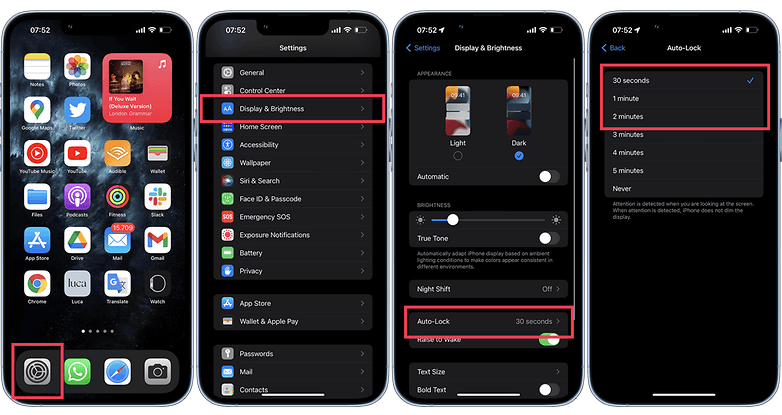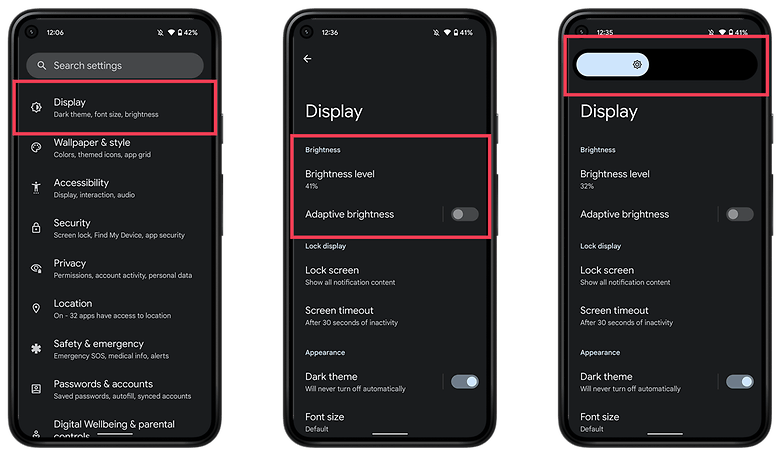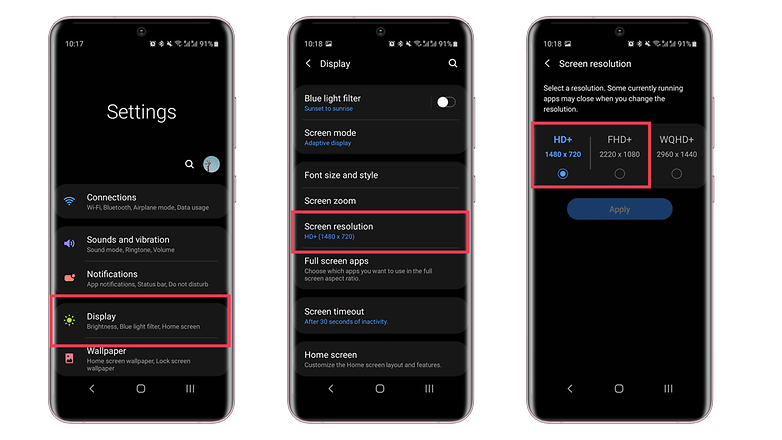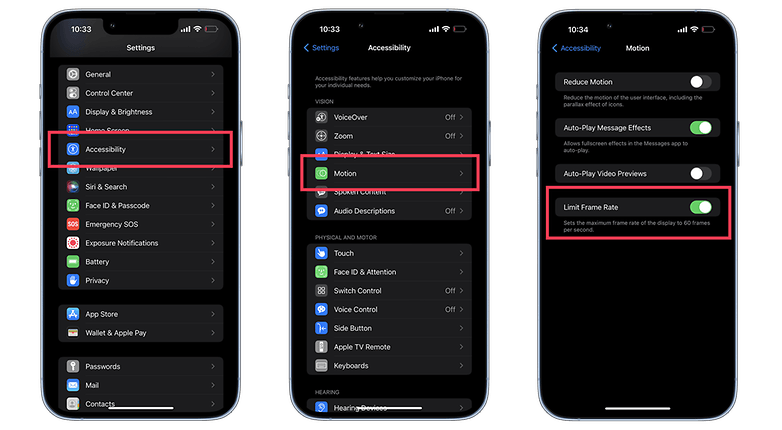If you look at the battery consumption display, the display is usually at the top! And even if displays have become more efficient in recent years, they have a strong impact on the battery life of your phone. In our latest coffee break, we reveal some display settings that will make your phone last longer during the day.
Although battery life is one of the most important characteristics of a cell phone, cell phone manufacturers don’t seem to make big leaps here. Even smartphones with huge batteries that offer 5,000 mAh usually only last a day or two. If your cell phone is older, there are various ways to conserve the smartphone battery.
However, many instructions forget the basics. Of course, a cell phone in flight mode uses less battery – but you can no longer surf the Internet or answer phone calls. Since there are some nuances with the display that affect the runtime of your cell phone, I have summarized some display battery saving tips for you.
Limits screen brightness and runtime
The first fact you should consider is this: the screen is the component that consumes the most power in a smartphone. So the more you limit the use of the screen, the more battery you can save until the next charge. Lowering the screen brightness is crucial for saving energy, but limiting the screen timeout also has a significant impact on the lifespan of your battery.
This is how you change the display timeout on your cell phone
Screen timeout is, quite simply, the amount of time your smartphone’s screen stays active after you stop using it. By default, this period is set too long, and many people would never think of reconfiguring such a feature.
Personally, I like to keep it between one and two minutes, but that’s mostly just necessary for my work. Personally, I wouldn’t have any problems with a display timeout of 15 to 30 seconds. So if you don’t stare at the display for a long time after using it, you can easily change this setting. Go to it Settings > Display > Screen timeout.
A screen timeout of more than 1 minute can make a world of difference to your phone’s battery life. / © NextPit
If you have the option ” screen attention” enabled, you also don’t have to worry about the display turning off while you’re looking at it. I recommend turning this feature on.
If you have an iPhone, you can do the same setting by resorting to: Settings > Display & Brightness > Auto Lock. By default, iOS already detects when you’re looking at the screen, so the iPhone won’t dim the screen while you’re looking at it.

The feature is also available on iOS. / © NextPit
Decreases the screen brightness
If you reduce the screen brightness of your smartphone in dark environments using the shortcuts, you can further optimize your smartphone’s battery.
First, make sure that adaptive brightness is disabled. Because everything that has to do with adjusting the brightness consumes electricity. You can also use this function manually at any time if required. If the option is not available in the shortcuts, you can find it on Android Settings > Display > Brightness.

It’s easy to save energy and surf all night long. / © NextPit
If you’re using an iPhone, you can do the same directly from Control Center or from Settings > Display & Brightness > Brightness to do. I also recommend here true tone to disable.

You can easily lower the brightness of the screen on your iPhone via the display settings / © NextPit
Lowers the resolution of your display
The resolution of the display can also be changed in the settings of many more expensive Android smartphones. This makes sense in that you can hardly see any difference between 4K, QHD and FHD+ on the small displays anyway. If the display is no longer sharp enough for you after the change, you can undo the setting at any time.

The resolution of your phone has a big impact on battery life. / © NextPit
The display resolution setting is usually located under “Settings” -> “Display” -> Screen resolution. In other cases, you can access the feature directly when you call up your display’s settings.
Decreases the refresh rate of your display
In recent years, Android has established that screens offer ever higher refresh rates. You can tell by the Hertz number that manufacturers boast about when introducing new smartphones. Modern mobile phone displays repeat their display between 90 and 144 times per second – i.e. at 90, 120 or 144 Hertz. The more hertz, the more energy is consumed.

How to change the resolution / © NextPit
In the display settings you will find an on and off switch for the feature on most cell phones with a high refresh rate. If your cell phone supports the display of variable refresh rates, you can also automate the whole thing. The cell phone adjusts the refresh rates depending on the usage scenario. How well this works in everyday life cannot be fully estimated. Write me your experiences in the comments.

The Pro Motion feature is only available on a few iPhone models. / © NextPit
As simple as these tricks are, you’ll notice a difference at the end of the day! I don’t consider these simple tricks as real pro knowledge to save your phone’s battery. But both are among the things I always use when setting up, and in my experience with smartphones, they actually make a difference.
For more tips and tricks on how to maximize smartphone battery life, check out these other suggestions:
How short/long is the screen time of your smartphone? How do you adjust the brightness of the phone display?
